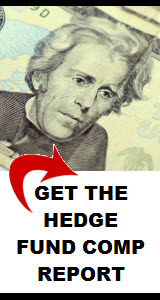Last time, we examined how market-neutral hedge funds “hedge” market risk with offsetting long and short positions. We looked at market-neutral equity investing in particular.
Investment professionals who hold jobs as market-neutral managers use other securities to hedge against market risk as well.
Bond hedgers try to remove the effect of broad market moves from their portfolio using long and short positions. Since attractive bonds usually have a higher yield than unattractive bonds, there is a yield spread between their long and short positions.
For example, if a high quality corporate bond offers a yield of 6.0 percent while a Treasury of comparable maturity offers a yield of 5.8 percent, the spread is 0.2 percent. If the bond hedger thinks that this is an attractive spread, then he will try to capture the spread by buying the corporate bond while shorting the Treasury.
In addition, since yield spreads are often very small, often less than 1 percent, the bond hedger will often use large amounts of leverage in order to deliver the overall return that he is seeking.
Long-Term Capital Management (LTCM) is an example of a highly leveraged bond hedging operation who’s spectacular failure illustrates the risks of bond hedging.
Long-Term Capital Management was a U.S. hedge fund which used trading strategies such as fixed income arbitrage, statistical arbitrage, and pairs trading, combined with high leverage. Initially enormously successful with annualized returns of over 40% (after fees) in its first years, in 1998 it lost $4.6 billion in less than four months following the Russian financial crisis. This led to a massive bailout by other major banks and investment houses, which was supervised by the Federal Reserve.
The third major type of market-neutral hedging is convertible hedging. Convertible securities are either convertible bonds or convertible preferred stocks. Bonds, preferred stock and common stock represent the three different parts of the capital structure of a company.
The convertible hedger looks for situations where the convertible security of a company looks relatively cheap compared to its common stock. He will buy the convertible security and short the common stock. Or vice versa, if he thinks the common stock looks undervalued relative to the convertible securities.
Shorting the common stock removes some of the risk of owning the convertible stock yet still leaves the potential for attractive total returns. The total return has both an income component (convertible bonds and preferred stock may pay dividends) and a trading profit component. Many convertible hedgers also use leverage in their portfolios to further increase their returns.
Traditionally, buyers of convertible debt used to be conservative investors seeking a steady income stream with some potential for capital appreciation. However, Jaeger now estimates that nearly 50 percent of the market for convertible securities is snapped up by hedge fund managers pursuing convertible hedging strategies.
The market-neutral strategy can be applied to many different investment scenarios. A growth investor could buy high-growth stocks and short those with opposite traits. Or a momentum investor may buy stocks just beginning their upward movement and short stocks that have a downward momentum.
The primary goal of a market-neutral strategy is to use the short position to protect against the effects of an overall market downturn. It is fundamentally a method of managing risk. Market-neutral investing requires a manager to devote time and energy to evaluating both his long and short positions carefully to ensure that he has the best combination of securities to hedge market risk and potentially profit from the “alpha” of a performance spread.
This article just scratches the surface of hedge fund careers in market-neutral investing, of course. Entire books have been written about market-neutral strategies, including:
–The Handbook of Alternative Assets by Mark J. P. Anson
–Market Neutral Investing by Eric Stokes
–Market-Neutral Investing by Joseph G. Nicholas
–Market Neutral: Long/Short Strategies for Every Market Environment by Jess Lederman, Robert A. Klein
–Market Neutral Strategies by Bruce I. Jacobs, Kenneth N. Levy, Mark J. P. Anson
–Pairs Trading by Ganapathy Vidyamurthy
We strongly encourage you to explore this popular investment strategy in greater detail with one of these books.
References:
Schwab, Claude. HEDGE ME: The Insider’s Guide: U.S. Hedge Fund Careers. Lynx Media.
Jaeger, Robert A., All About Hedge Funds: The Easy Way to Get Started. McGraw Hill.






Comments on this entry are closed.